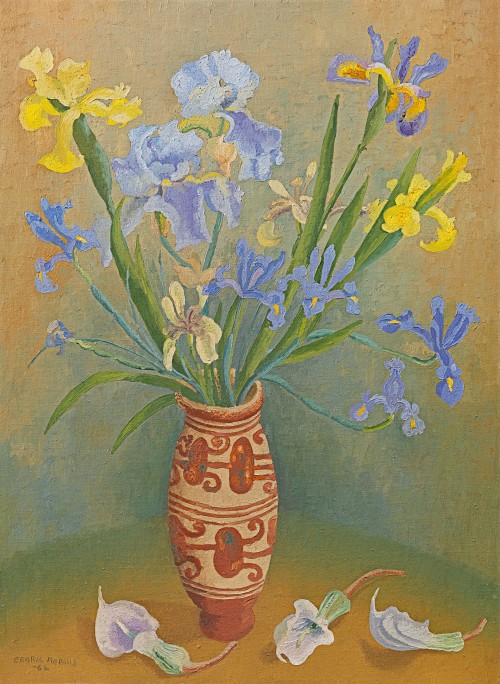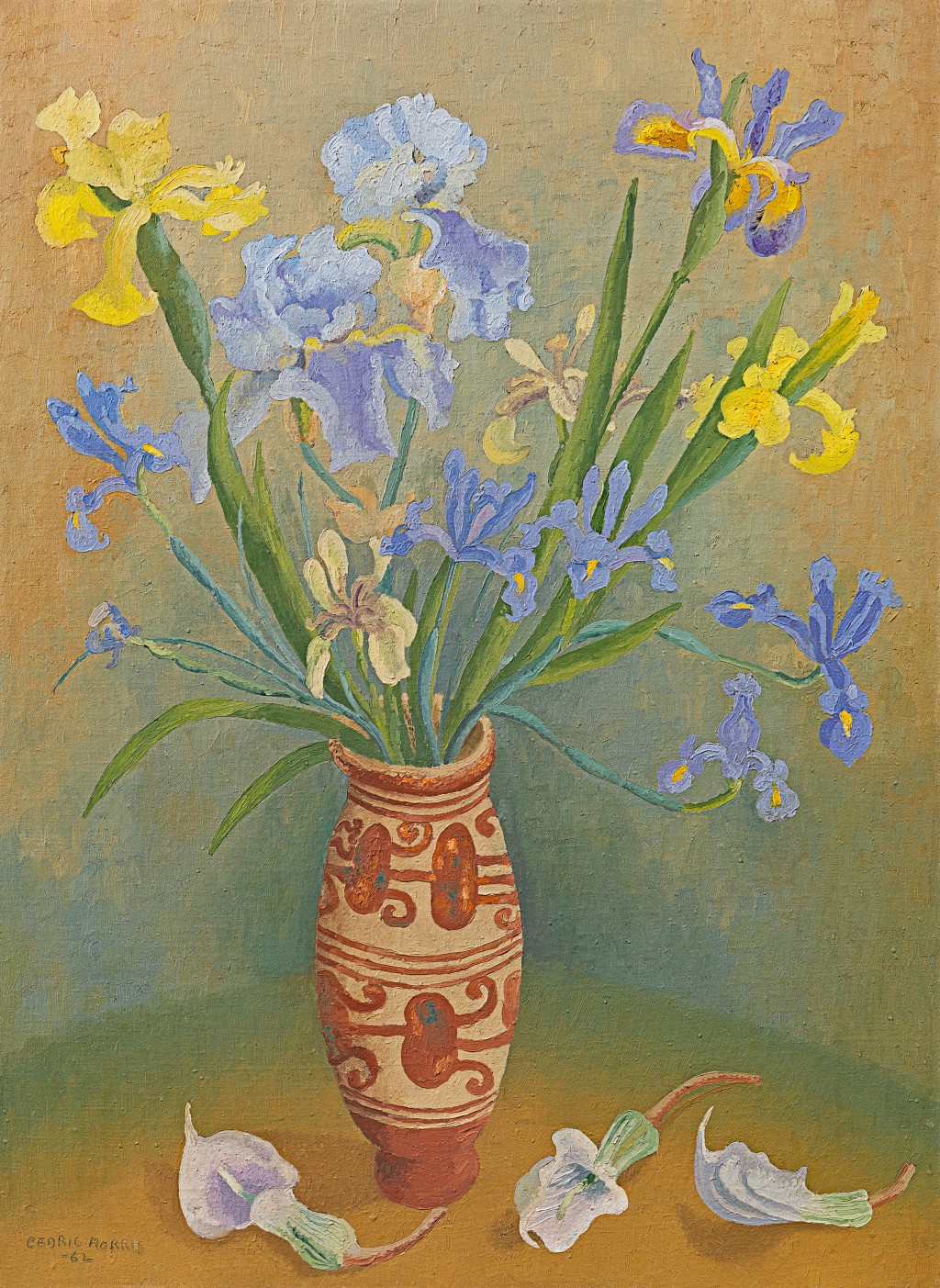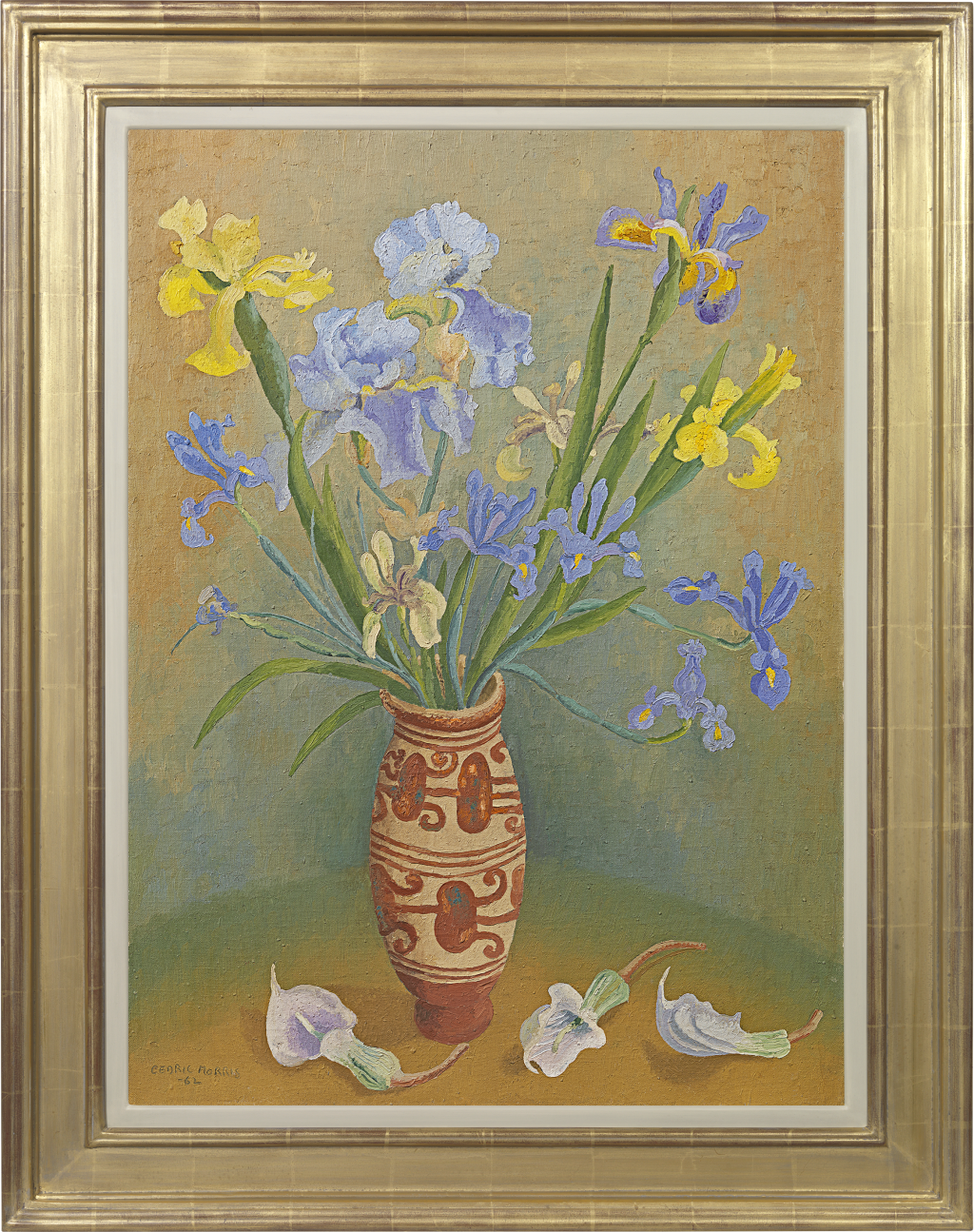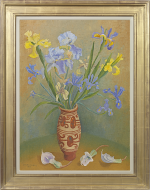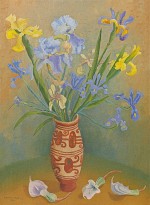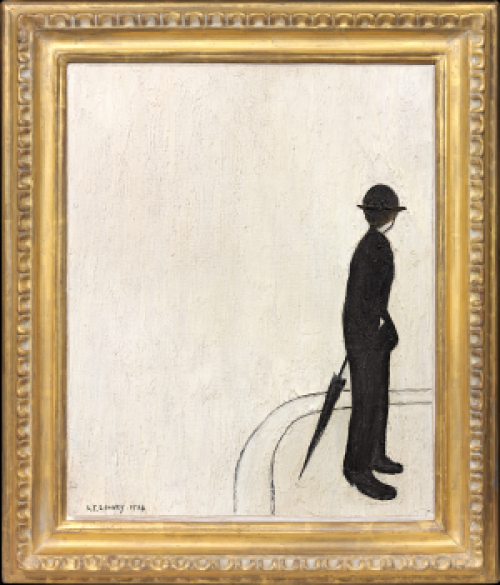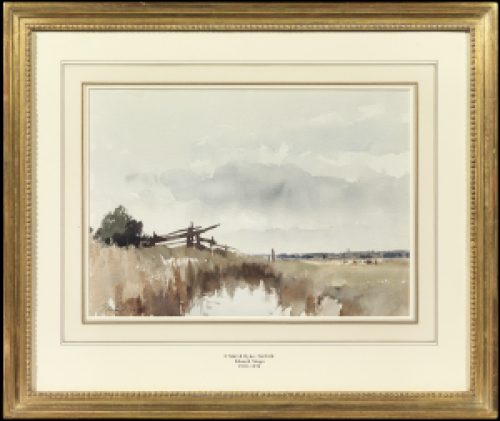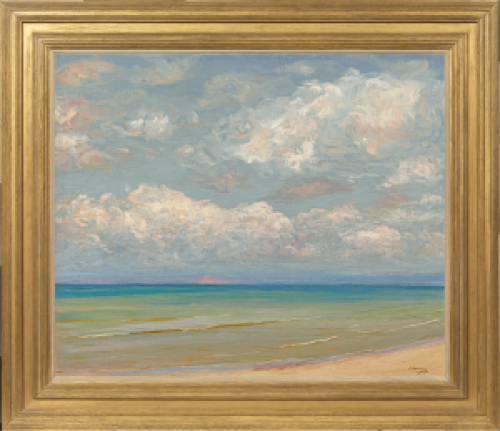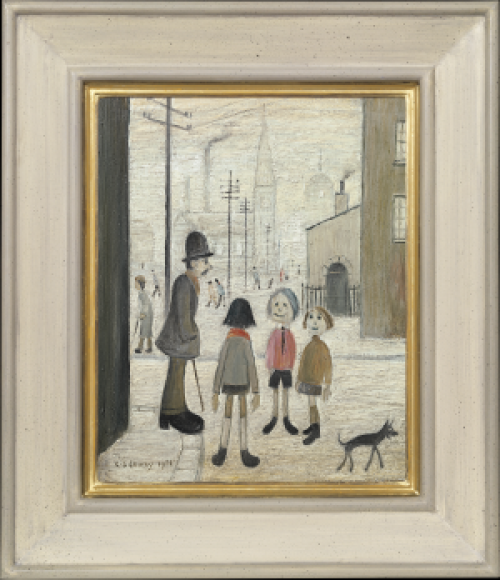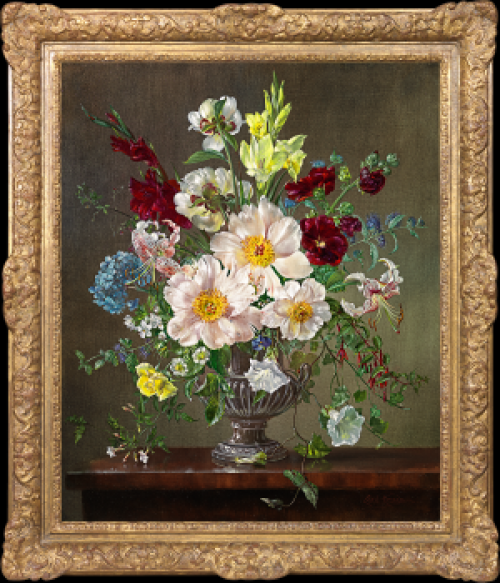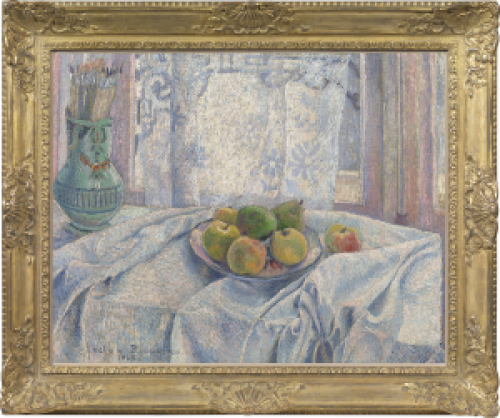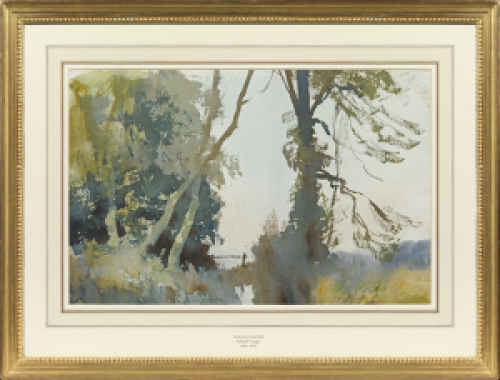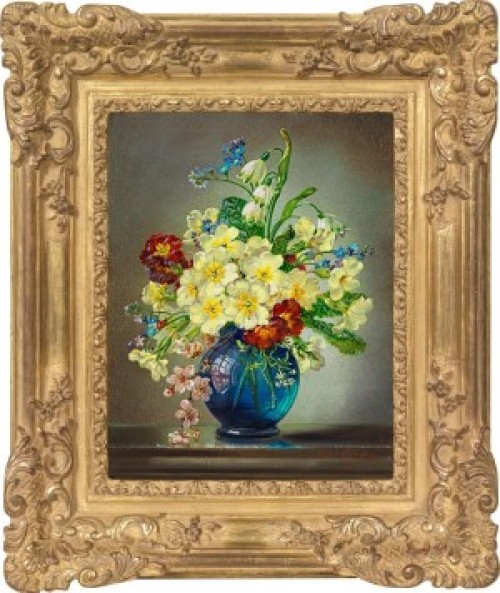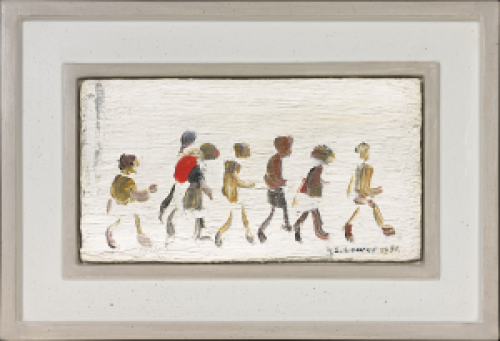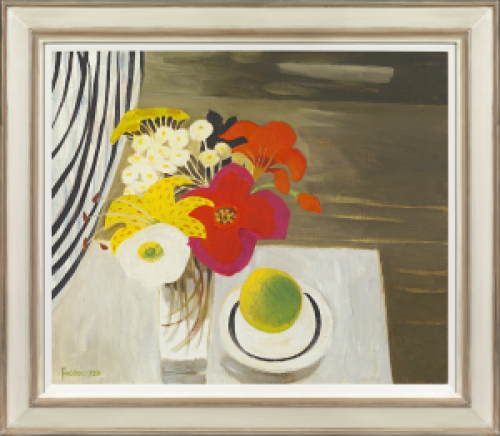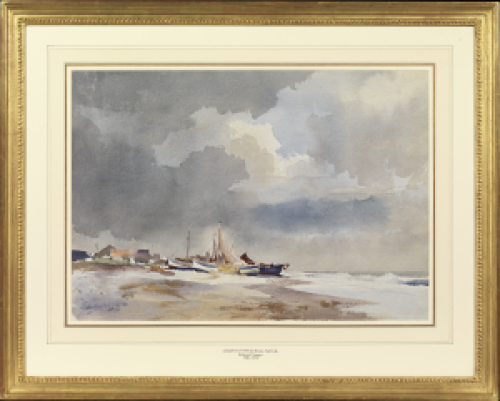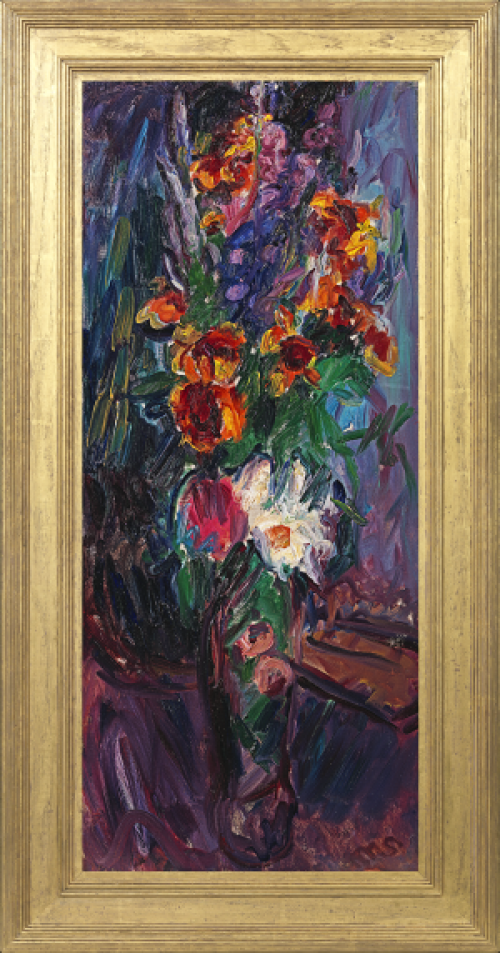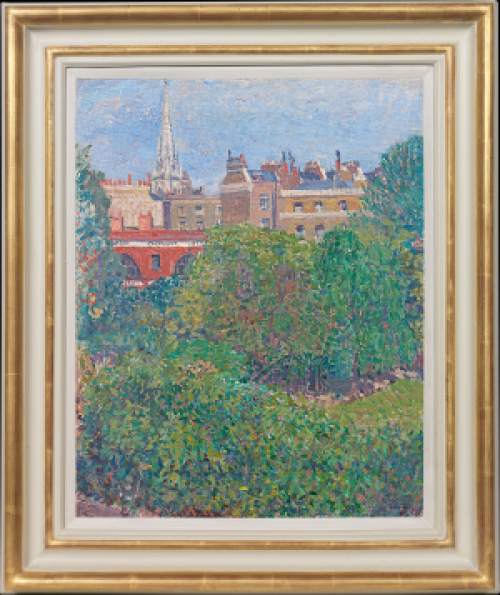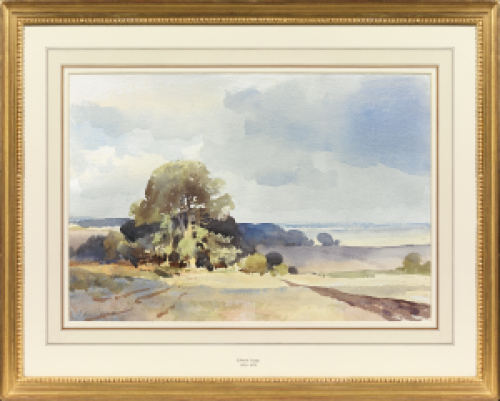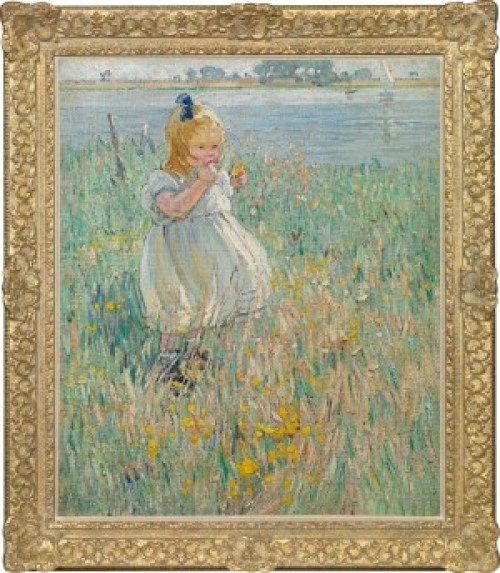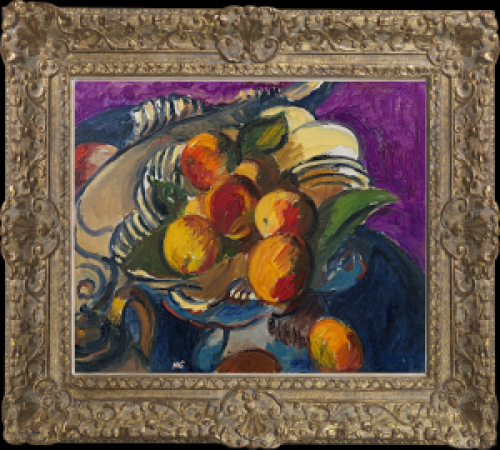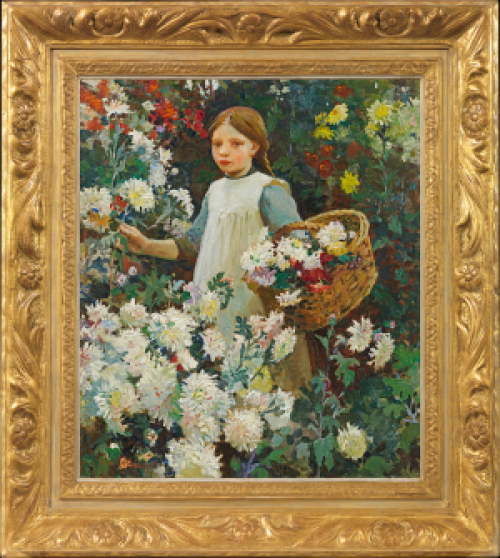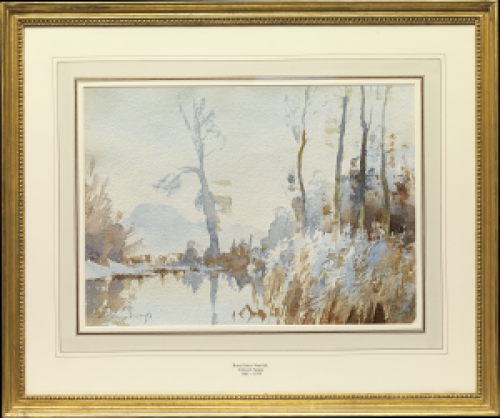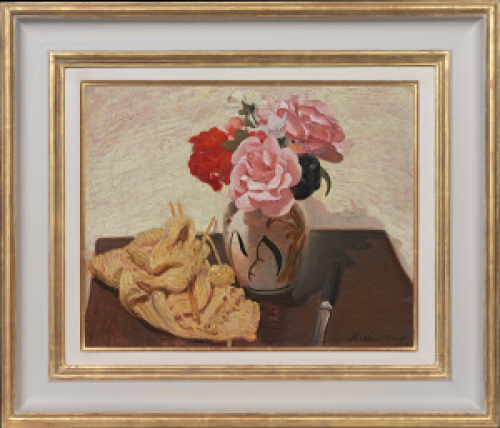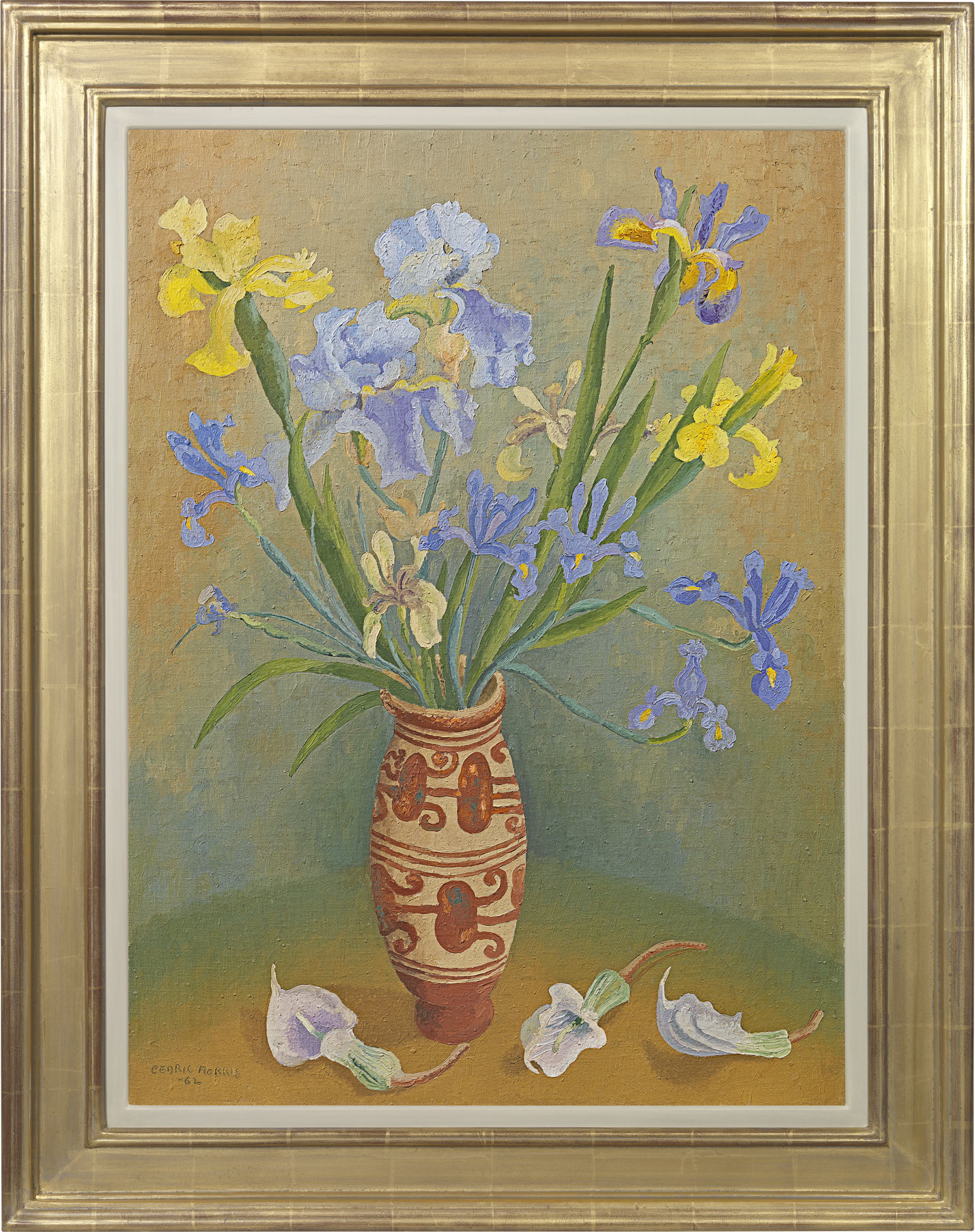SIR CEDRIC LOCKWOOD MORRIS, 9TH BT.
Sketty, Swansea 1889 - 1982 Ipswich
Ref: CA 156
Still life with irises
Signed and dated lower left: CEDRIC MORRIS / - 62
Oil on canvas: 30 x 21 ½ in / 76.2 x 54.6 cm
Frame size: 37 ¼ x 29 in / 94.6 x 73.7 cm
In an antique water gilt frame with washsed gesso inset
Provenance:
Upper Grosvenor Galleries, London;
CJH Gault, acquired from the above;
private collection, Auckland, New Zealand
Exhibited:
London, Upper Grosvenor Galleries, Cedric Morris Paintings, 14th April-14th May 1970, no.29 (as Mixed irises in Hispano-Mauresque vase, wrongly dated 1966); illus. on the cover
Sudbury, Suffolk, Gainsborough’s House, Revealing Nature: The Art of Cedric Morris and Lett-Haines, 6th July-3rd November 2024, no.24
Literature:
Dr Patricia Hardy (ed.), The Art of Cedric Morris & Lett-Haines, exh.cat., Gainsborough’s House Society, Sudbury 2024, fig.6, illus. in colour p.13
From 1940 Cedric Morris lived at Benton End, a rambling, sixteenth century house at Hadleigh in Suffolk, running the East Anglian School of Painting and Drawing with his partner Lett Haines. He also created an atmospheric garden, ‘painting with flowers’ in an informal but harmonious way: ‘A garden is either right or not right; I don’t know why’, he would say[1].
In the 1940s and 50s Morris became a renowned breeder of irises, which often feature in his still lifes. This painting explores the intricate, sinuous shapes of several species of iris, from the large, bearded irises at the top centre of the composition, the type bred by Cedric, to the pale yellow, violet-veined Iris foetidissima, one of only two iris species occurring in Britain as a native wildflower. With creamy brushwork and brilliant economy, Morris evokes the petals as they twist in space, giving each bloom an individual personality. The irises are arranged in an earthenware vase perhaps acquired on one of his winter plant-collecting trips to Spain or North Africa. The vessels for Cedric’s flowers are always a carefully considered part of the composition.
A surreal element is added by the inclusion of three detached flowers of Chinese cobra lilies (Arisaema candidissimum) on the table, their scimitar-shaped stalks and taloned hoods giving a sense of creatures writhing at the base of the bouquet. Morris had a profound reverence for plants, their ancient development and history, writing of ‘the eternity of experience that flowers themselves have, not merely of struggle and achievement but a crystallization of all past apprehensions’[2].
Flower key and comments by Celia Fisher
Cedric Morris, Irises in a vase
1 Bearded iris Iris germanica
2 Yellow flag iris Iris pseudacorus
3 Bulbous iris Iris latifolia (previously called xiphiodes)
4 Gladdon or stinking iris Iris foetidissima
5 Chinese cobra lily Arisaema candidissima
Comments
The blue or purple bearded iris is the traditional garden iris of Europe, appearing frequently in old master paintings, especially in association with the Virgin and Child. As a plant the bearded iris is distinguished not only by having the largest flowers, but also by the large rhizome from which the leaves and roots grow. This separates bearded irises from other irises that grow from bulbs - hence the name Bulbous iris for the more slender blue species. These started to be cultivated in Europe later and first appeared in seventeenth-century flower pieces. They were native to Spain, but as they became naturalized and then hybridized in England and Holland, their origins were confused and they are now most often known as Dutch. The slight variations between cultivars can be seen in this arrangement.
The yellow iris grows wild on water margins and Iris foetidissima is a woodland flower, so called because when the leaves are crushed they have a ‘beefy’ smell.
The most unusual flowers lie on the table. Arisaema is an aroid genus, meaning that these are related to arums. They are Asiatic and American plants. This species, the only white one (hence the name candidissima), is Chinese, sometimes known as cobra lily. It was introduced by the plant hunter George Forrest who was collecting in China from 1904 until his death in 1932, which would suggest this was quite a new plant when Cedric Morris painted it. Despite its provenance it is hardy enough to adapt to being an English garden plant. Other Arisaema species grow in America where their common name is Jack-in-the-pulpit (beloved of Georgia O’Keefe).
SIR CEDRIC LOCKWOOD MORRIS, 9th Bt.
Sketty, Swansea 1889 – 1982 Ipswich
Cedric Morris, one of the most original British painters of the twentieth century, was the son of the iron magnate George Lockwood Morris, 8th Bt. He descended from a line of Welsh industrialists whose founder, Sir John Morris (1745-1819) had been a patron of Reynolds and brother of Margaret Desenfans, co-founder of Dulwich Picture Gallery. In 1914 Morris studied at the Académie Delacluse in Paris, before spending the First World War in the Army Remount Service with Alfred Munnings and Cecil Aldin. In 1918 Morris met his lifelong partner, the artist Lett Haines, and the pair settled in Newlyn, Cornwall.
In 1920 Cedric and Lett moved to Paris where, great party-goers and -givers, their circle included Duchamp, Gris, Léger, Peggy Guggenheim, Nancy Cunard and Hemingway. Morris was influenced by abstraction although he continued to paint bold, almost naïve landscapes, incisive portraits and Parisian genre pieces. He had his first well-received London exhibition in 1924. Two years later he settled with Lett in London, becoming a member of the Seven and Five Society at the same time as Christopher Wood, who influenced him.
Morris’s 1928 exhibition at Arthur Tooth, which included some of his powerful and mysterious animal paintings, was a sell-out. A countryman who liked to paint with his pet rabbit Maria Marten perched on his shoulder, Morris seemed to distil the essence of flowers, birds and animals in colourful, richly-textured works. Wry humour, and his admiration for Italian ‘primitives’ such as Piero della Francesca, is apparent in a work of 1926, The entry of moral turpitude into New York (private collection, England), sparked by the American authorities’ refusal to let a divorced, titled Englishwoman enter the USA.
In 1929 Morris moved to Pound Farm, Higham in Suffolk, inheriting the house from his landlady and student Mrs Vivien Doyle Jones in 1932. There he created a memorable garden, becoming a renowned breeder of irises. In the 1930s, deeply distressed by the effects of the Depression in his native Wales, Morris made many trips back to his birthplace, organising an exhibition of Welsh Contemporary Art at Aberystwyth and becoming involved with an art centre for the unemployed at Gwernllwyn House, Dowlais.
Already disillusioned with the wiles of London dealers, Morris nevertheless went ahead with an exhibition of portraits at Guggenheim Jeune Gallery in 1938. A guest so objected to his work that he began to burn the catalogues and Morris hit him: ‘the walls of the gallery were spattered with blood’[3]. Thereafter Morris abandoned the London art scene. The previous year he and Lett had set up the East Anglian School of Painting and Drawing in Dedham, Essex. When the building caught fire in 1940 (gleefully applauded by Sir Alfred Munnings, who hated modern art) the school, as well as Cedric and Lett’s home, moved to Benton End, Hadleigh, Suffolk, where another marvellous garden was created. Students were given creative freedom as well as a solid grounding in technique (not to mention the benefits of Lett’s superb cooking). Alumni include Lucian Freud (who imbibed Morris’s method of painting directly on to canvas, without underdrawing) and Maggi Hambling. Morris travelled to America, Mexico and Cuba in the 1930s and to Europe and north Africa throughout his life, collecting rare plants and painting landscapes. Failing sight caused Cedric Morris to give up painting in 1975, but he was still gardening at the age of ninety-one in 1981; he died in Ipswich the following year.
The work of Cedric Morris is represented in Tate Britain, London; the V&A, London; the National Portrait Gallery, London; the National Museum of Wales, Cardiff; the Musée du Petit Palais, Geneva; the Koninklijk Museum voor Schone Kunsten, Antwerp and the City Art Gallery, Auckland.
[1] Quoted in London, Garden Museum, Cedric Morris: Artist Plantsman, 2018, exh. cat. by Andrew Lambirth, p.38.
[2] Cedric Morris, ‘Concerning flower painting’, The Studio, vol. CXXIII, no.590, May 1942, p.130.
[3] Quoted in Morphet, ibid., p.54.

